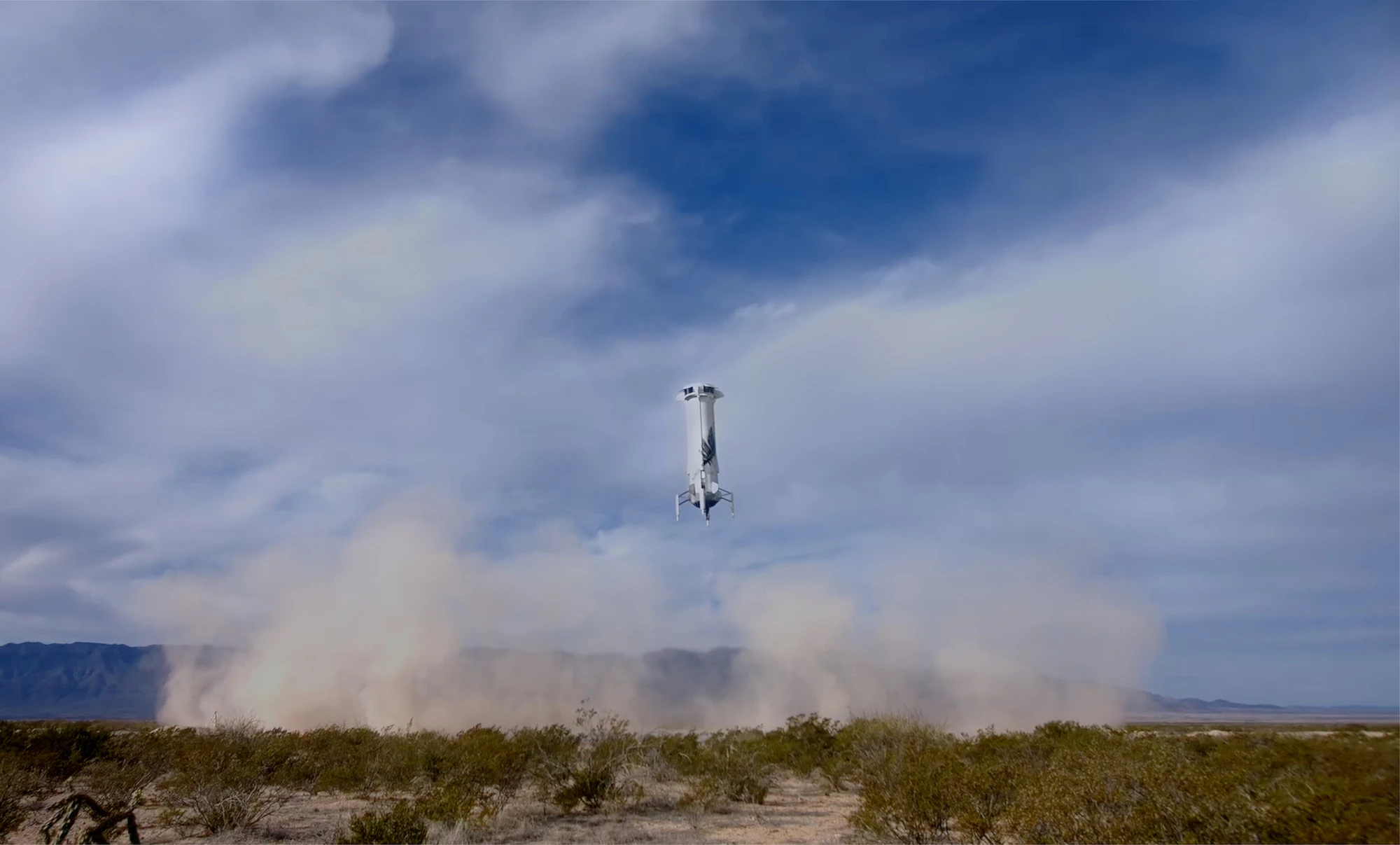After being grounded for over a year, Blue Origin's New Shepard rocket has returned to the skies and completed its 24th flight from the company's Launch Site One in West Texas as it transported 33 payloads to the edge of space.
The uncrewed mission lifted off on December 19, 2023 at 10:42 am CST with the space capsule RSS H G Wells atop the NS.9 booster. After separation, the booster reached a maximum altitude of 347,208 ft (105,829 m) before returning to Earth for a powered landing. Meanwhile, the capsule went on to 347,601 ft (106,941 m) before parachuting to a landing on the desert floor at 10:52 am CST for a total mission time of 10 minutes and 13 seconds.
Today's launch came after the failure of New Shepard 23 on September 12, 2022, when the main engine malfunctioned one minute and four seconds into the flight. The rocket tilted, activating the uncrewed capsule's abort system, which pushed the capsule clear. After reaching an altitude of 37,000 ft (11,278 m), the RSS H G Wells landed intact, while the booster was destroyed on impact with the ground.
The incident resulted in a six-month investigation by the FAA, which ordered modifications to the BE-3PM rocket engine to make it less susceptible to high temperatures.
"A special thank you to all of our customers who flew important science today and the students who contributed postcards to advance our future of living and working in space for the benefit of Earth," said Phil Joyce, Senior Vice President, New Shepard. "Demand for New Shepard flights continues to grow and we’re looking forward to increasing our flight cadence in 2024."
The video below recaps the flight of New Shepard 24.
Source: Blue Origin





